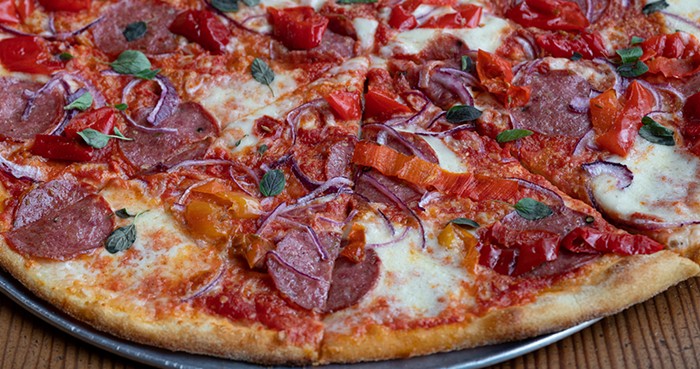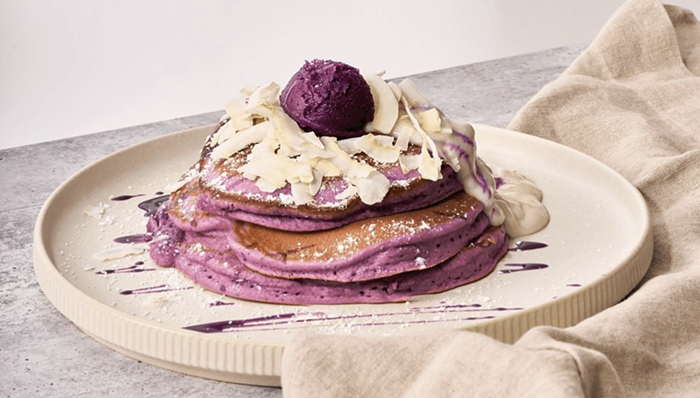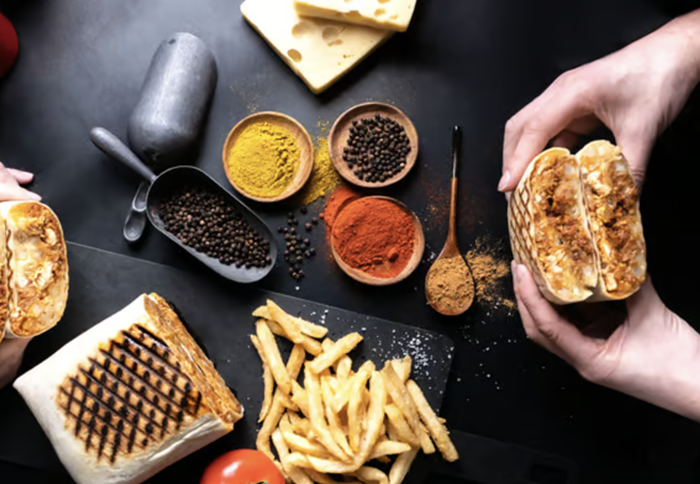The Pacific Northwest has a proud India pale ale tradition. This here's hop country, and no brewers on earth, except those bronzed SoCal hop mongers, can lay claim to the modern IPA crown like our royal fermenters.
However, a new wave of IPA—championed by guys with funny accents—is encroaching from the East, challenging the West Coast's hoppy supremacy. The so-called Northeast-style IPA, marked by its hazy appearance and bursts of tropical fruit, is the hottest beer trend of the moment.
Until recently, Washington beer geeks had to scour beer-trading websites for lauded progenitors like the Alchemist's Heady Topper. Now local versions—from Urban Family Brewing Co.'s murky Pulp Control to Fremont Brewing's Belmont Station, which drinks like a pineapple beer-mosa—have reached taproom ubiquity.
"Ten years ago in the Northwest, for most IPAs, it was an IBUs arms race," says Reuben's Brews founder Adam Robbings, using shorthand for international bittering units. "You want to pucker your mouth out as hard as you can. Whereas now we're coming off of that, thankfully. Most of our beers, we don't lead with piercing IBUs... It's all about balance."
Balance was once a dirty word among hop heads who came to equate "hoppy" with the bracing bitterness common in West Coast IPAs. Northeast IPAs, on the other hand, typically shun bitterness for juicy flavor and aroma by shifting most of the hops additions from the boil kettle to the late-stage dry-hopping process, which is all about aroma. Raise a glass of Robbings's last Double Crush, the imperial version of his rotating hazy IPA series, and the scent of fresh papaya hits you like sticking your face in a juice bar's blender. The next installment debuts Saturday, May 6, during Reuben's fifth annual Rye Fest, part of Seattle Beer Week.
With these unfiltered ales heavily focused on hop aroma, which fades over time, most brewers recommend drinking them as soon as possible. Don Spencer, brewmaster at Bremerton's standout Silver City Brewery, suggests cracking open his Northeast-inspired Tropic Haze IPA (or really any beer) within 90 days of its canning date.
"It's like a bouquet of flowers, man, you want to appreciate it while it's fresh," Spencer maintains.
But for all the flavor driven by the style's beach-fruit fragrance, it's the as-seen-on-Instagram haziness that gets the most attention. For Robbings, that opaque turbidity isn't really the point. Rather, it's a byproduct of using a fruity British yeast strain, wheat, and flaked oats for body and immense dry-hopping with oily American hops (three times as much as Reuben's Crikey IPA).
While New England breweries—namely the raved-about Alchemist and Hill Farmstead in Vermont—are often cited as the style's originators, Spencer argues it's tough to credit any brewery or region with pioneering the "hazy" IPA. When the Silver City brew dude came up in the late 1980s and early '90s, hazy IPAs were commonplace, simply as a result of available ingredients and brewing processes of the time.
Instead it's drinkers who have come around on cloudier beers, Spencer contends. Heady Topper has been one of the country's most coveted brews for roughly a decade, but it wasn't until the past year or so that the "haze craze" swept the Left Coast and everywhere in between. "It's become more widely known now," Robbings says. "If we had done it back in March of 2015 [when his Crush series idea was hatched], I think that would have freaked a lot of people out."
Given its proliferation in Seattle and beyond, there doesn't seem to be much of a coastal IPA rivalry. Still, who would have thought Northeast brewers could teach our Northwest IPA kings hoppy new tricks?
"Well, I wouldn't go that far," Spencer says with a chuckle. ![]()



















